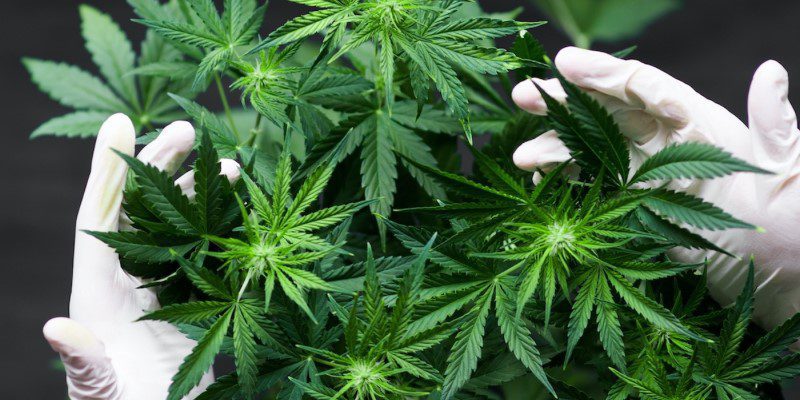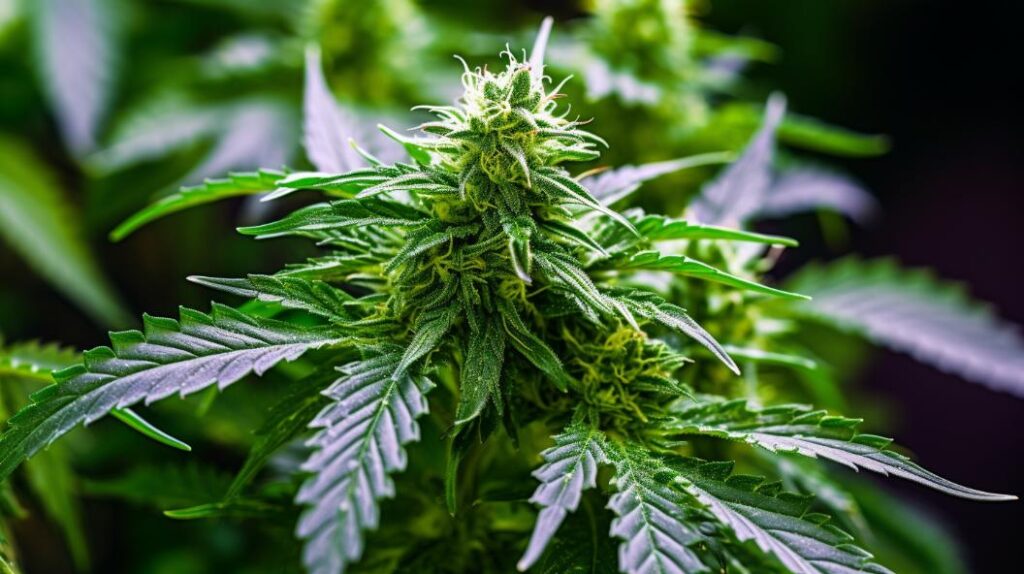Growing Tuna Kush, a potent and aromatic cannabis strain, can be a rewarding endeavor whether you choose to cultivate it indoors or outdoors. Each environment presents unique challenges and benefits that can significantly impact the yield of your plants. Understanding these environmental factors can help you optimize your cultivation strategy and achieve the best possible harvest. In this blog post, we’ll explore the key environmental factors that affect Tuna Kush yield in both indoor and outdoor settings.
1. Light Exposure
Indoor:
- Control: One of the biggest advantages of indoor growing is the ability to control light exposure. Grow lights, such as LEDs or HPS, can provide a consistent and optimal light spectrum for Tuna Kush plants.
- Photoperiod: By adjusting the light schedule, growers can manipulate the photoperiod to induce flowering at the desired time. Typically, an 18/6 (18 hours of light, 6 hours of darkness) schedule is used for the vegetative stage, transitioning to a 12/12 schedule for flowering.
Outdoor:
- Natural Light: Outdoor plants rely on the natural sunlight, which can vary depending on the geographic location and season. Tuna Kush plants benefit from long days during the vegetative stage and shorter days to trigger flowering.
- Sunlight Hours: Ensuring that the plants receive at least 6-8 hours of direct sunlight per day can help maximize yield. Shading and weather conditions can affect light exposure and, consequently, plant growth.
2. Temperature and Humidity
Indoor:
- Climate Control: Indoor growers can precisely control temperature and humidity levels using HVAC systems, humidifiers, and dehumidifiers. Ideal temperatures for Tuna Kush range from 70-85°F (21-29°C) during the day and slightly cooler at night.
- Humidity: Maintaining humidity levels between 40-60% during the vegetative stage and 40-50% during flowering helps prevent mold and mildew while promoting healthy growth.
Outdoor:
- Seasonal Variability: Outdoor temperatures and humidity levels can fluctuate significantly with the seasons. Tuna Kush plants prefer a warm, Mediterranean-like climate with minimal temperature swings.
- Weather Impact: Unpredictable weather conditions, such as rain and frost, can pose challenges. Growers must be prepared to protect plants from extreme conditions using greenhouses or temporary covers.

3. Air Circulation and Ventilation
Indoor:
- Ventilation Systems: Proper air circulation is crucial to prevent mold and pests. Indoor growers use fans and exhaust systems to ensure fresh air is continuously supplied to the grow room.
- CO2 Enrichment: Some indoor growers enhance plant growth by adding CO2 to the environment, which can significantly boost yields if managed correctly.
Outdoor:
- Natural Airflow: Outdoor plants benefit from natural air circulation, which helps strengthen plant stems and reduce the risk of mold and pests.
- Wind Protection: While natural airflow is beneficial, strong winds can damage plants. Using windbreaks or planting in sheltered locations can help mitigate this risk.
4. Soil and Nutrients
Indoor:
- Controlled Medium: Indoor growers often use soil or hydroponic systems, allowing precise control over nutrient delivery. This ensures that Tuna Kush plants receive the optimal mix of nutrients for maximum yield.
- Nutrient Management: Regular feeding with a balanced nutrient solution tailored to the growth stage can prevent nutrient deficiencies and promote robust growth.
Outdoor:
- Soil Quality: The quality of outdoor soil can vary greatly. Amending the soil with organic matter and ensuring proper pH levels (6.0-7.0) is essential for healthy plant growth.
- Nutrient Absorption: Outdoor plants may require additional fertilization, especially if the native soil is deficient in essential nutrients. Regular soil testing can help guide nutrient management practices.
5. Pests and Diseases
Indoor:
- Pest Control: Indoor growing environments can be easier to protect from pests and diseases. Using integrated pest management (IPM) strategies, such as beneficial insects and organic pesticides, helps keep plants healthy.
- Cleanliness: Maintaining a clean grow room and using sterilized equipment can prevent the introduction and spread of pathogens.
Outdoor:
- Natural Predators: Outdoor plants benefit from natural predators that help control pest populations. However, they are also more exposed to a wider range of pests and diseases.
- Monitoring: Regular monitoring and early intervention are key to managing pests and diseases in outdoor grows. Organic pest control methods and crop rotation can help maintain plant health.
Indoor Lighting Considerations:
- Spectrum Control: Indoor grow lights, such as LEDs, offer the ability to control the light spectrum precisely. Tuna Kush plants benefit from a full spectrum of light that mimics natural sunlight, including both blue and red wavelengths. Blue light is crucial during the vegetative stage as it promotes healthy leaf and stem growth, while red light is essential during the flowering stage to encourage bud development.
- Light Intensity: The intensity of light is another critical factor. Tuna Kush plants require high-intensity light to thrive indoors. Growers should ensure that the light source is close enough to the canopy to provide adequate illumination but far enough to avoid heat stress or light burn. Light intensity can be measured in micromoles per square meter per second (μmol/m²/s), with optimal levels ranging from 400-600 μmol/m²/s during the vegetative stage and 600-900 μmol/m²/s during flowering.
Outdoor Light Exposure:
- Seasonal Sunlight Patterns: Understanding the seasonal patterns of sunlight in your location is crucial for outdoor growing. Tuna Kush, like most cannabis strains, requires long days and intense sunlight during the vegetative stage, typically found in late spring and early summer. As the days shorten in late summer and early fall, the plant naturally transitions to the flowering stage.
- Geographic Location: The geographic location can significantly impact the amount of sunlight your Tuna Kush plants receive. Growers in regions with long growing seasons and mild climates, such as Mediterranean or subtropical zones, will likely see better yields. However, growers in more temperate or northern regions can still achieve successful harvests with careful planning and possibly using supplemental lighting.
Indoor Climate Control:
- Day and Night Temperature: Maintaining an optimal temperature range is essential for indoor Tuna Kush plants. During the day, temperatures should be kept between 70-85°F (21-29°C). At night, temperatures can drop slightly, ideally staying within 60-70°F (16-21°C). Consistent temperatures help the plant grow steadily and reduce stress.
- Humidity Control: Humidity levels play a significant role in plant health and yield. During the vegetative stage, higher humidity levels of 40-60% help promote vigorous growth. In the flowering stage, lowering humidity to 40-50% helps prevent mold and mildew, which can devastate the buds. Dehumidifiers and humidifiers can be used to maintain these levels, and good airflow helps keep humidity in check.
Outdoor Temperature and Humidity:
- Seasonal Temperature Fluctuations: Outdoor growers must contend with natural temperature fluctuations. Tuna Kush plants prefer warm, stable temperatures, similar to those found in a Mediterranean climate. Sudden drops in temperature, especially below 50°F (10°C), can stunt growth and negatively impact yields.
- Weather Protection: In regions with unpredictable weather, it’s crucial to have contingency plans. Greenhouses can provide a controlled environment, protecting plants from extreme weather conditions such as heavy rain, wind, or early frost. Temporary covers can also shield plants during unexpected cold snaps.
Indoor Air Management:
- Ventilation Systems: Proper ventilation is key to maintaining a healthy indoor grow environment. Exhaust fans should be used to expel stale air and bring in fresh air, ensuring a constant supply of CO2, which is essential for photosynthesis. Intake fans or passive intake vents can help facilitate this air exchange.
- CO2 Enrichment: Enhancing CO2 levels in the grow room can significantly increase yield. Tuna Kush plants, like other cannabis strains, can benefit from CO2 levels around 1000-1500 ppm (parts per million), compared to the natural atmospheric level of 400 ppm. This enrichment should be carefully monitored and regulated to avoid toxicity.
Outdoor Airflow Considerations:
- Natural Airflow Benefits: Outdoor growing benefits from natural air circulation, which helps strengthen plant structures and reduce the likelihood of mold and pests. However, strong winds can damage plants, so it’s important to choose a site with adequate wind protection or to use windbreaks.
- Microclimates: Outdoor growers can take advantage of microclimates within their growing area. Planting near structures that radiate heat, such as brick walls, can extend the growing season by providing warmth. Additionally, choosing spots with natural wind barriers, such as hedges or trees, can help create a more stable growing environment.
Indoor Growing Mediums:
- Soil vs. Hydroponics: Indoor growers can choose between soil and hydroponic systems. Soil is more forgiving and easier for beginners, providing a natural buffer for nutrients. Hydroponics, while more complex, offers faster growth and higher yields by delivering nutrients directly to the roots.
- Soil Amendments: For those using soil, it’s important to enrich the growing medium with organic matter, such as compost or worm castings. Adding perlite or vermiculite can improve drainage and aeration, essential for root health.
Outdoor Soil Management:
- Soil Preparation: Outdoor growers should test the soil to determine its composition and pH levels. Amending the soil with organic matter, such as compost or manure, can improve fertility and structure. The ideal pH range for cannabis is between 6.0 and 7.0.
- Mulching and Watering: Mulching around the base of the plants can help retain moisture, suppress weeds, and regulate soil temperature. Regular watering is crucial, especially during dry spells. Drip irrigation systems can provide a consistent water supply without over-saturating the soil.
Indoor Pest Management:
- Preventative Measures: Indoors, maintaining cleanliness is paramount. Regularly sterilizing equipment and grow spaces can prevent the introduction of pests and pathogens. Quarantining new plants before introducing them to the grow room can also help prevent infestations.
- Integrated Pest Management (IPM): Using IPM strategies, such as introducing beneficial insects (e.g., ladybugs, predatory mites) and applying organic pesticides, can effectively control pest populations without harming the plants.
Outdoor Pest and Disease Control:
- Natural Predators: Outdoor plants benefit from the presence of natural predators that help control pests. Encouraging biodiversity in the garden, such as planting companion plants that attract beneficial insects, can create a balanced ecosystem.
- Regular Monitoring: Regularly inspecting plants for signs of pests or diseases allows for early intervention. Organic treatments, such as neem oil or insecticidal soaps, can be effective in managing infestations.
Conclusion
Both indoor and outdoor cultivation of Tuna Kush have their unique challenges and benefits. Indoor growing offers precise control over environmental factors, leading to potentially higher yields and better quality buds. However, it requires a significant investment in equipment and energy costs. Outdoor growing, on the other hand, benefits from natural sunlight and airflow, reducing the need for artificial inputs but introducing variables like weather and pests.
By understanding and managing the key environmental factors—light, temperature, humidity, air circulation, soil, and pest control—growers can optimize their practices to achieve the best possible yields of Tuna Kush. Whether you choose to grow indoors or outdoors, careful planning and attention to detail will ensure a bountiful and rewarding harvest.

